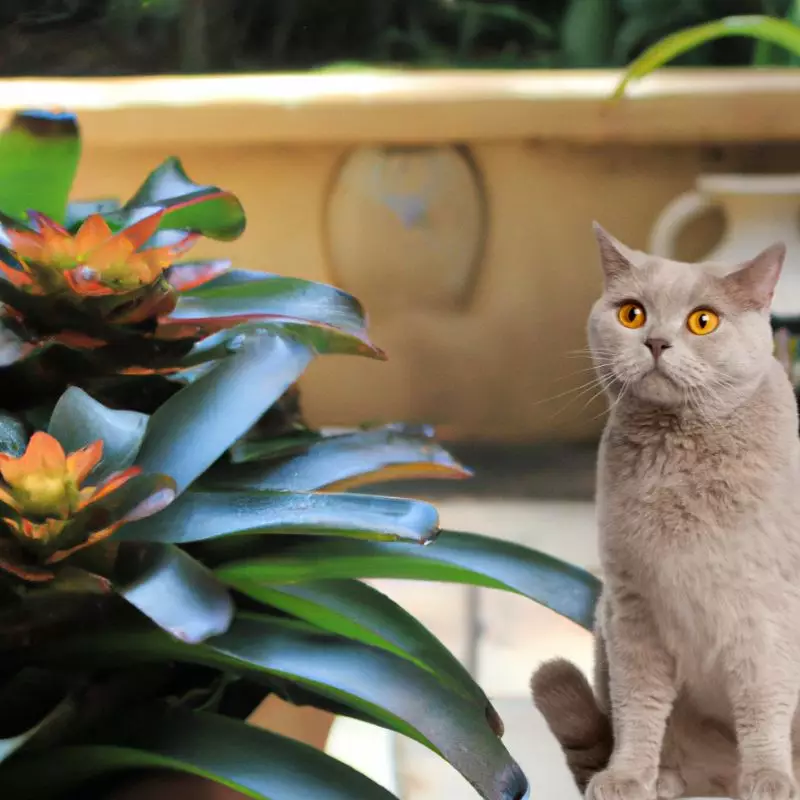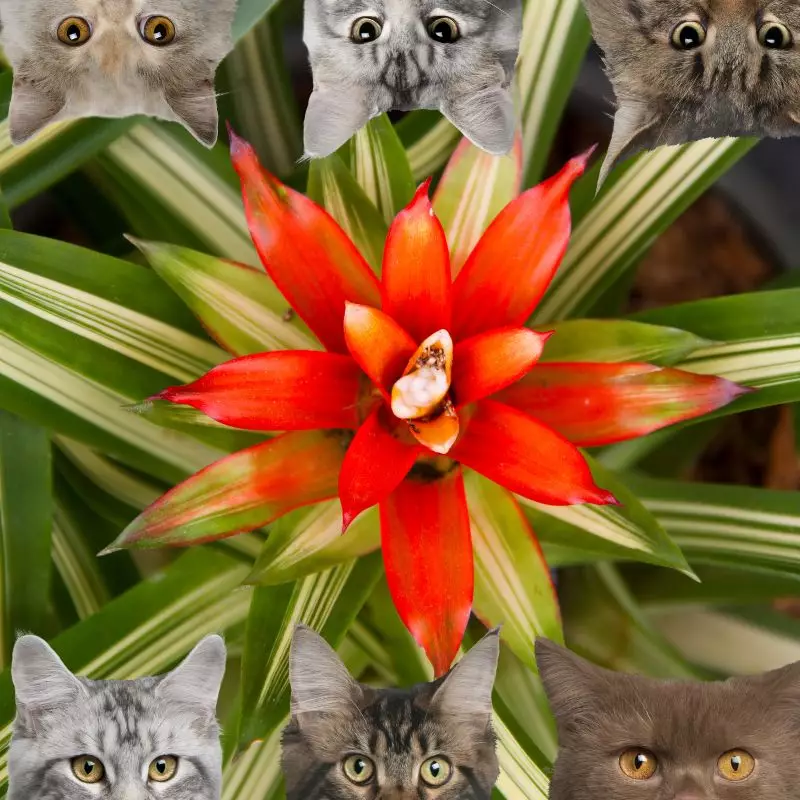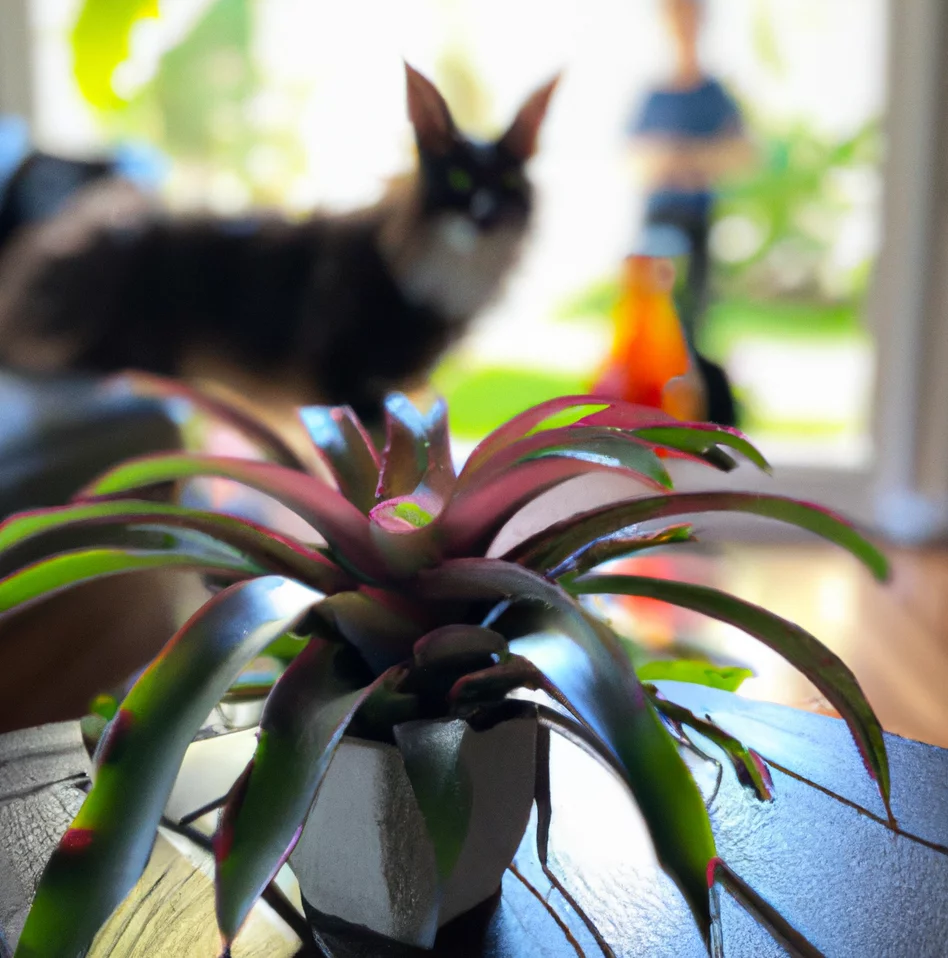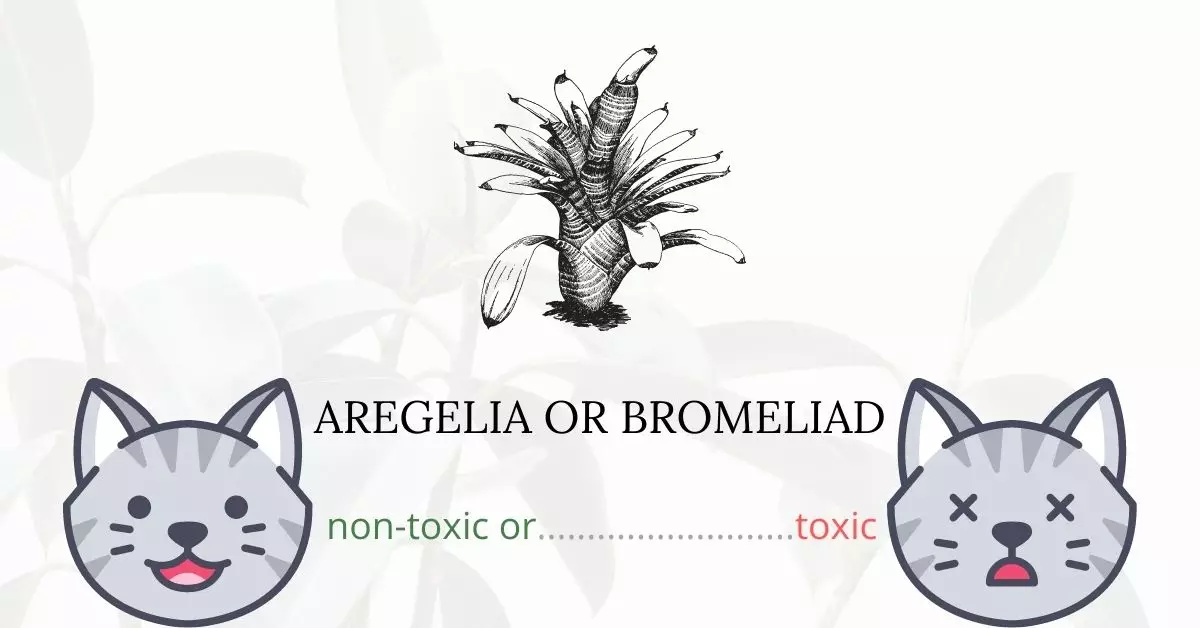Aregelias or Bromeliads are not toxic to cats, providing peace of mind to cat owners who wish to cultivate these plants in their homes.
This article has been meticulously written in collaboration with a team of experienced Doctors of Veterinary Medicine (DVMs). Their invaluable insights ensure that we are delivering precise and contemporary information about the possible risks associated with various plants, with a focus on Aregelias, and their impacts on cats. Additionally, we have corroborated our findings with high-authority websites, such as ASPCA and PetMD, to guarantee the reliability of our information on every plant we discuss.
Aregelias are acknowledged by the American Society for the Prevention of Cruelty to Animals (ASPCA) as non-toxic plants and are renowned for their ability to purify the air of volatile organic chemicals (VOCs) emitted by paints, furniture, cleaning supplies, printers, copiers, and dry-cleaned garments, to name a few. This distinctive quality makes Aregelias a perfect choice of houseplant, not only for cat owners but for anyone who appreciates having greenery inside their homes.
Can Cats Eat Aregelia or Bromeliad?

Although aregelia is classified by ASPCA as a non-toxic plant, this does not mean that you can let your cat indulge in too much in the plant.
Sensitive cats may experience allergic reactions after eating aregelia. On top of that, cats have difficulty digesting plant materials. This is because felines are generally meat-eaters and lack the required enzymes to process plant matter in their stomachs.
Also, fertilizers are commonly used by growers to encourage plant development. Some of these fertilizers may contain hazardous substances which can harm your cats. If these chemicals are present in the aregelia plant that your cat has ingested, he or she may experience poisoning symptoms.
What is Aregelia or Bromeliad?

Aregelia is also known for its many other common names such as Blushing Bromeliad, Bromeliad, Crimson Cup, Marbled Fingernail, Miniature Marble Plant, Neoregelia, Ossifragi Vase, and Striped Blushing.
Scientifically known as Neoregalia from the Bromeliaceae plant family, Aregelias are tropical plants known for their distinctive leaf, tenacity, flexibility, and ease of care. They are little plants that grow from 2 inches to 1 foot tall and up to 2 feet broad. Their leaves are frequently speckled, banded, or marbled, with spines around the borders. When the core leaves are about to blossom, they will typically become crimson.
Aregelias can withstand temperatures ranging from 50 to 90 degrees Fahrenheit and require a sunny location in the house for the optimum leaf color. The flowers are little and emerge in the middle vase, opening a few at a time with tubular blossoms. This plant is commonly grown for its leaves rather than its blooms.
Keeping Cats Away From Aregelia or Bromeliad

Cat owners should put their plants in a place where cat’s cannot access. You can also try using natural deterrents or try the aluminum foil trick. Cats are not fond of the crinkly feel and smell of aluminum foils so they usually avoid it.
Plants to Avoid For Your Cats
If you are a cat owner and unsure if the plants growing in your yard are harmful to your cats, check out this list of toxic plants for cats. You can also check our list of non-toxic plants for cats.





